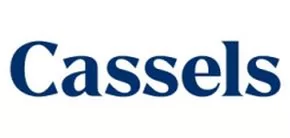- with readers working within the Accounting & Consultancy industries
- within Food, Drugs, Healthcare and Life Sciences topic(s)
- with Senior Company Executives, HR and Finance and Tax Executives
A Preliminary Economic Assessment (PEA) is a valuable tool for communicating to the market the potential economic viability of a mineral project at an early stage, prior to the completion of more detailed feasibility or pre-feasibility studies. However, in most instances, issuers continue to aggressively explore the project following the PEA, which can lead to variations to the study parameters, including material increases to the mineral resource estimate (MRE), which the issuer is required to (and will want to) publicly disclose. This raises an important question: if there has been a material change to the MRE that warrants disclosure and triggers the filing of a new technical report, what are the implications with respect to the existing PEA and related technical report under National Instrument 43-101 – Standards of Disclosure for Mineral Projects (NI 43-101)?
Under NI 43-101, the disclosure of a material change to the MRE on a property that is material to an issuer, whether due to new mineral resources being delineated or other changes to technical parameters, triggers the requirement to file a technical report. In such circumstances, the issuer must ensure that the technical report supporting the updated MRE complies with all relevant sections of NI 43-101, including Form 43-101F1 requirements for technical report content.
This does not strictly result in a requirement to include a fully updated PEA in the new technical report. However, any material impact on the PEA is required to be addressed, including whether the PEA should no longer be considered valid or current. At the time of the updated MRE, the issuer should assess the effects on the existing PEA, particularly as it relates to the scope of impact and the nature of the changes. For example, an increase in the MRE because of new drilling may be more limited in impact vs. broader variations in the parameters and assumptions underlying the MRE due to fluctuations in metal prices and other technical revisions (such as mining method, etc.). In the case of more limited changes, provided that the economics presented in the existing PEA remain reasonably current considering the new MRE, or are not materially affected, the existing PEA may still be considered current. Conversely, in instances where the existing MRE is reinterpreted due to more significant and broad-reaching variations that the existing PEA does not reflect, the issuer must consider whether the PEA remains valid or would be materially affected.
There are circumstances wherein the existing PEA remains valid and current based on the prior MRE without an update to incorporate the new MRE model (where updating may not be feasible due to insufficient time prior to the technical report filing deadline). If this is the case, there are ways that the existing PEA can still be discussed by the issuer and not retracted.
In practice, an issuer may disclose the updated MRE in a new technical report and include the prior PEA, with appropriate caveats. According to s. 4.2(8) of the Companion Policy to NI 43-101, an issuer is only allowed to have one current technical report at a time. If the PEA was not included in the most recently filed technical report, an issuer would no longer be able to disclose the results of the PEA as it would no longer be considered current and covered by the current technical report.
Assuming the PEA remains valid despite not reflecting the increase of the MRE, an issuer would incorporate and restate the prior PEA in the current technical report using the prior MRE. This approach can help ensure that an issuer's disclosure remains consistent with NI 43-101's requirements for accuracy, clarity, and non-misleading presentation, while ensuring the market has the most updated material information regarding the MRE update. As such, the issuer should ensure that appropriate cautionary language is also included to make it very clear what changes have occurred that resulted in the updated MRE and that such changes do not have a significant impact on, or otherwise materially affect, the previous MRE used for the PEA. It should also state that the issuer is evaluating the necessity of updating the PEA using the updated MRE and that it will decide on this later once it has fully assessed.
It is important to remember that the above approach is premised on the Qualified Person (QP) determining that the current PEA remains valid considering the updated MRE, which permits continued reliance on such study, as long as the issuer's overarching disclosure obligations are met. However, if the QP concludes that the updated MRE materially changes the project's parameters such that the current PEA no longer carries the same relevance, where there is a significant and material impact, then the issuer will likely need to file a new technical report incorporating the updated economic analysis based on the updated MRE or explicitly retract the PEA.
Ultimately, the implications of an updated MRE on an issuer's disclosure obligations must be assessed within the specific context of the issuer's circumstances. Given the complexity and nuance of applicable disclosure requirements, issuers are strongly advised to seek legal advice to ensure compliance with their regulatory obligations.
The content of this article is intended to provide a general guide to the subject matter. Specialist advice should be sought about your specific circumstances.




